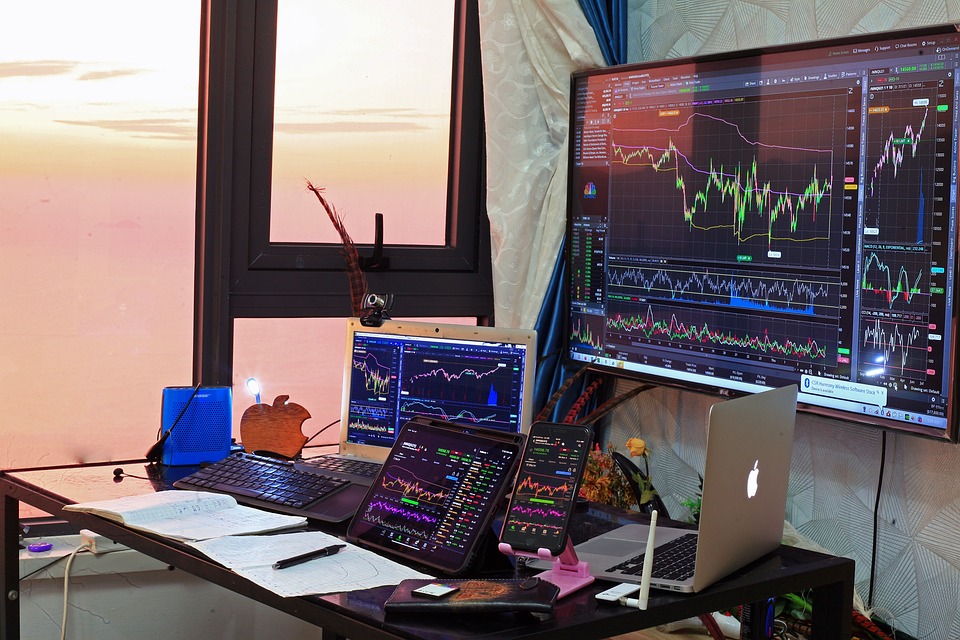One of the many benefits of trading as a skill is how it is not effected by recessions, there is always a good trade during a recessionary period, in fact they are often great times due to the increased volatility.
Firstly for those not aware many countries around the world are in recession at the moment, what this refers to is a time where people have less spare money to spend in the economy thus reducing demand for some common items people used to buy. Coffee, pizza, etc..
Often these times happen during periods where a economy has large amounts of debts ( such as housing debt ) and thus a lot of the money in that society, a lot of spare money in that society is being spent to back the interest on that debt. This in turn reduces the amount of spare money for going to a cafe or a holiday or other common yearly activities, it then eventually turns into some businesses closing down and some remaining open as there product or service is more needed during that time, however to summarize sales are often down effecting nearly every business in some way other than business that is essential to life.
As for traders they can benefit during these types of times by hedging the negative effects of a recession such as trading more assets that historically have done well during recessionary periods ( such as Gold or Silver, etc.
It also allows traders to build a sell position in assets that tend to underperform during these times, there are many ways to play a time like this and every trader is different.

A common understanding that many know is that during recessionary periods central banks tend to start to reduce rates over time, increase liquidity which in turn benefits many assets, in particular stocks, gold and silver. Before this phase starts though or effects markets often markets tend to be sideways or start to trend lower, are we in that stage yet, not just yet in my opinion, however many central banks are trying to position themselves for a softening in rates in the near future to support the lending part of the economy, thus supporting the price of assets such as stocks, gold, silver etc.
This will take a bit of time this time in my opinion because inflation is still too high for them to be aggressive in any rate reductions. What is likely to happen in my opinion is that central banks in many western countries next year in 2025 will start to slowly lower rates, however the amount of lowering of rates will be limited to keep inflation at bay and controlled. The U.S. however as they raised interest rates to 5.5 is likely to lower rates by as much as 0.25 to 0.50 by the end of the year 2024, this is partly due to the national debt which in the U.S. is completely out of control.
Bearing in mind this is just my opinion, what I am assuming the zero interest interest rate policy central banks had in the past is not something that will happen again in the near future, what is more likely in my opinion is 3.5 per interest rates being the new normal for most western economies with the exception of the U.S. as they need to dramatically debase their currency in order to reduce their national debt in the future. This is likely their only path which means the U.S. will be a much poorer country in the near future from a currency strength perspective, however they have no other choice.
Some of my predictions in summary for Rates:
- The U.S. Federal Reserve is likely to lower to a 5 percent interest rate by the end of 2024 and in 2025 is likely to lower by the end of the year to around 3.5 percent.
- Australia will start lowering interest rates in around April / May 2025 to 4 percent, they will do it slower than the U.S. because Australia still has some lingering inflation especially in housing and because Australia only raised interest rates to 4.35 percent which is a very low rate. The choice of only raising interest rates to 4.35 meant that they cannot lower for a longer period of time. The only reason Australia would lower rates quicker than this in my opinion is if the housing market corrected ( dropped in value ) by at least 20% against the Australian dollar, if that happened then the RBA would lower at a faster pace. The RBA will likely lower to around 3.7 percent by the end of 2026, however that will be the floor unless inflation drops below 2 percent, then a floor of 3.5 percent is what I would expect.
Of course, above is my speculative opinion of what I am expecting will play out over the next year for the U.S. and Australia, it may not play out this way as central banks have a tendency to sometimes surprise. Right now a big surprise in my opinion would be them not lowering rates at all in the U.S. and Australia for the next couple of years. In fact, what would be even more surprising for the market is if they decided to raise rates by another 0.25 to 0.50 percent, this would take the market by surprise as nearly everyone is expecting them to start easing by the end of this year or early next year by the latest.
